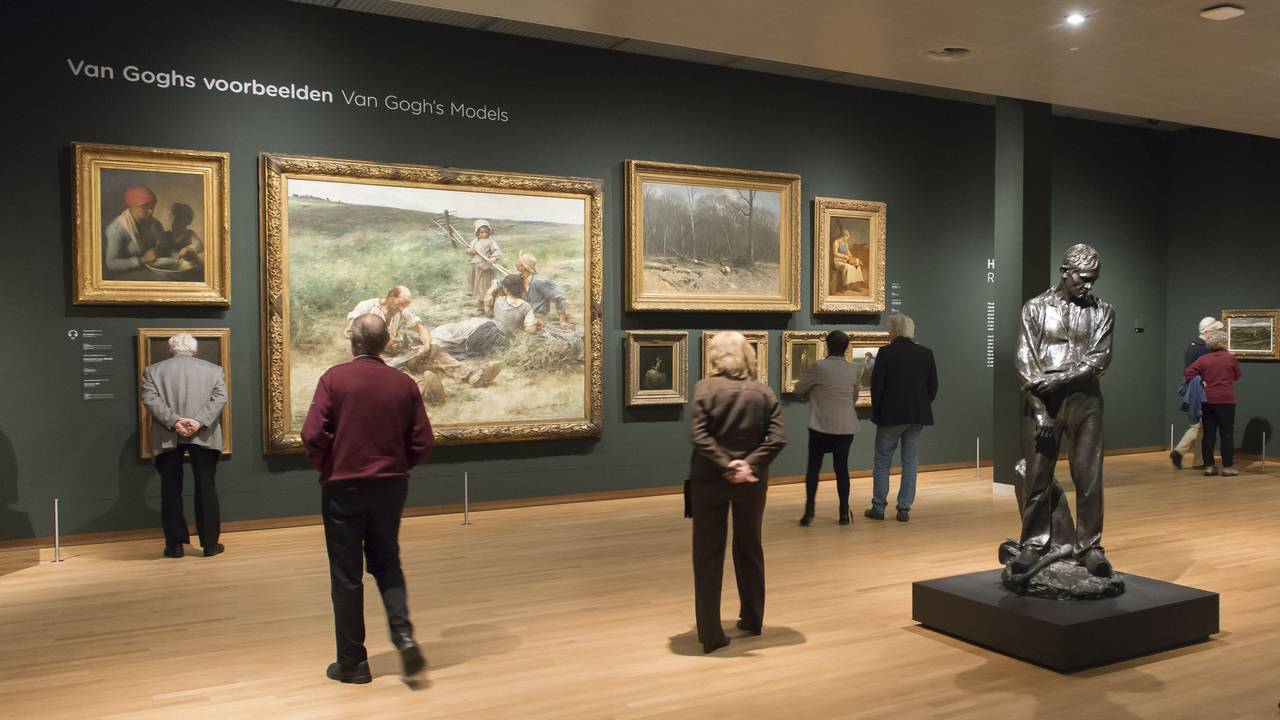Sunflowers by Vincent van Gogh
Vincent van Gogh’s Sunflowers series (1888–1889) is a vibrant celebration of color, life, and artistic emotion. Painted in Arles to welcome Paul Gauguin, the iconic yellow blooms reflect Van Gogh’s passion for nature, friendship, and creative expression—turning simple flowers into timeless symbols of beauty and hope.
🧑🎨 The Artist and the Commission
Vincent van Gogh, a Dutch Post-Impressionist painter known for his expressive use of color and bold brushwork, created the Sunflowers series during a pivotal period in his life. In 1888, while living in Arles in the south of France, Van Gogh envisioned establishing a community of artists. He prepared for the arrival of fellow artist Paul Gauguin by painting decorative works for the guest room, with Sunflowers intended as a welcoming gesture and a symbol of friendship.
The commission was not formal or commercial in nature—it was self-motivated, part of Van Gogh’s dream to create a shared artistic environment. The sunflowers, full of energy and emotion, reflected his hope and excitement for this collaboration. Though his partnership with Gauguin would later become strained, the Sunflowers remain a lasting testament to Van Gogh’s ideals of beauty, harmony, and artistic companionship.

💡 Light, Shadow, and Movement
In Sunflowers, Vincent van Gogh reimagines light and shadow not as literal contrasts, but as emotional and expressive elements. He bathes the entire composition in golden hues, creating a radiant atmosphere where sunlight seems to come from within the flowers themselves. Rather than using sharp contrasts or deep shadows, Van Gogh applies layers of yellows and ochres to model form and create subtle depth.

Movement emerges through his bold, swirling brushstrokes and thick applications of paint (impasto), which give the flowers a sculptural, almost animated quality. The curved stems, curling petals, and textured surfaces suggest gentle motion—as if the blooms are shifting in a breeze or turning toward the sun. In this way, Van Gogh captures not just the physical appearance of sunflowers, but their energy, vitality, and connection to the natural rhythms of light and life.
🕵️♀️ Symbolism and Storytelling
Van Gogh’s Sunflowers are more than still-life paintings—they are visual stories rich in symbolism and personal meaning. The sunflowers, shown in various stages from fresh bloom to withering decay, represent the cycle of life, growth, and impermanence. Through them, Van Gogh expresses themes of vitality, mortality, and the passage of time.

For the artist, sunflowers symbolized warmth, gratitude, and hope—qualities he deeply associated with friendship and creativity. When painting these works to welcome Paul Gauguin, Van Gogh intended them as a gesture of artistic camaraderie, transforming simple flowers into emblems of connection and shared vision.
At a deeper level, the sunflowers may also reflect Van Gogh’s inner world—his emotional highs and lows, and his intense desire to find beauty and meaning in ordinary things. Each painting in the series becomes a quiet narrative, telling the story of an artist who found profound expression in the humble, sunlit face of a flower.
🔍 Technical Genius
Van Gogh’s Sunflowers showcase his remarkable technical innovation and mastery of paint. One of the most striking aspects is his use of impasto—thick, textured layers of oil paint applied with bold, confident strokes. This technique gives the flowers a three-dimensional, sculptural quality, allowing light to physically catch on the ridges of the paint, enhancing the vibrancy and dynamism of the work.
His limited yet expressive color palette—primarily yellows, ochres, and earthy greens—demonstrates a sophisticated understanding of color theory. Van Gogh experimented with the emotional impact of different tones, using variations of yellow to create contrast, depth, and a sense of glowing warmth without relying on conventional shading.
Additionally, his compositional choices—arranging the flowers to show different stages of life and decay—reflect a deep artistic intellect. He breaks with traditional still-life symmetry, creating tension and rhythm through asymmetry, overlapping forms, and varied textures.
In Sunflowers, Van Gogh’s technical genius lies not in precision, but in the ability to capture life, emotion, and movement with expressive, unconventional means that still resonate with power and originality today.
🏛 Restoration and Legacy
Van Gogh’s Sunflowers have endured not only as masterpieces of Post-Impressionism but also as fragile works of art requiring careful preservation. Over the years, various versions of the series—housed in museums like the Van Gogh Museum in Amsterdam and the National Gallery in London—have undergone meticulous restoration and conservation efforts. These include cleaning, stabilizing the thick impasto layers, and protecting the delicate pigments, particularly the light-sensitive yellows, which are prone to fading over time.
The legacy of Sunflowers is vast and enduring. These paintings have become universal symbols of hope, creativity, and resilience. They mark a turning point in Van Gogh’s career, showcasing his transition into a bolder, more expressive style. Their influence can be seen in countless modern and contemporary artists who draw inspiration from his color use, emotional intensity, and technical freedom.
Today, Sunflowers is not just an artwork—it’s a cultural icon. Reproduced in everything from prints to fashion, and studied across generations, the series reflects Van Gogh’s dream of making art that was both deeply personal and profoundly shared. It continues to inspire, reminding the world of the beauty that can bloom from struggle and the timeless power of artistic vision.
✨ Why It Endures
Van Gogh’s Sunflowers endures because it speaks to something universal—the beauty found in simplicity, the emotion behind color, and the humanity in imperfection. These works are not grand in subject matter, but in feeling. A vase of flowers becomes a symbol of life’s fleeting brilliance, of love and loss, of hope blooming even in isolation.
The series also endures because of Van Gogh’s honest, expressive style. His swirling brushstrokes, radiant yellows, and raw textures connect directly with the viewer, bypassing artifice and touching something intimate and real. Each petal and stem seems alive, full of character and story.
Culturally, Sunflowers has grown into a global icon of creativity and resilience. It captures Van Gogh’s vision of beauty that transcends suffering—a legacy made more powerful by the knowledge of his personal struggles. Whether seen in a museum or on a postcard, Sunflowers continues to move people because it feels genuine, radiant, and profoundly human.
See Sunflowers by Vincent van Gogh in:
Van Gogh Museum Amsterdam
View full details



